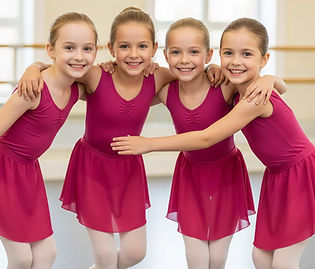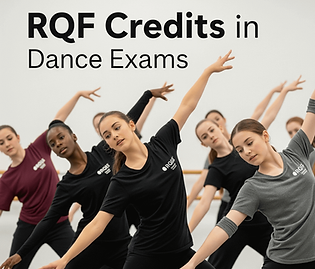
IDTA Exams Explained
We offer regular exam sittings throughout the year, below you can read about the level your childs current level and their onward pathways.
Ballet & Tap Exams
Rosette Exams
Our dance examination journey begins at around 4/5 years old with the IDTA Rosette Exam. They are examined in small groups (of up to 8 children) with the reassuring presence of their teacher leading them and giving cues throughout the 5 minute long exam.
In the lead up to the exam we practice skipping into & around the room, finding our place and standing ready to introduce ourselves to the examiner. We then dance two short routines before exiting the room the same way we came in.
All children who enter this exam will achieve a pass; receiving a rosette and certificate for their efforts.

First Steps in Ballet Award | First Steps in Tap Award
This exam is similar to the Rosette level in that the teacher can participate and offer guidance as needed. This ensures a comfortable and supportive experience for all.
It is around 15 minutes in length and features a total of 15 exercises including a choreographed entrance, dance and curtsey which are conducted much like they would in a class, but with the examiner observing.
It is a fantastic in that it prepares students for the full blown graded exams that follow, but without their teacher in them. This gives a great opportunity to experience a longer exam with the security of a teacher.

Preparatory Grade
These dance examinations represent an exciting progression for our students, marking their first formal assessment at a higher level.
Dancers invited to participate in these exams will be encouraged to refine their technique and artistry, as the standards are more rigorous and examiners will be tougher in their marking.
During the exam, students will perform a series of technical exercises and dances independently, demonstrating their skills without the teacher present in the examination room. They are assessed on three key areas: Technique, Musicality, and Performance. Based on their demonstration, students can achieve a Pass, Merit, or Distinction.

Star Dance Awards
The next round of examinations dancers will take are the Star Dance Awards; these awards are carefully designed to solidify foundational skills and nurture artistry in a supportive environment (with the teacher present), ensuring a positive and progressive learning experience.
During the Star Dance exam, students will perform a series of set routines which the Examiner will mark. They receive a named plaque to collect their "Stars" on as well as a certificate.
These awards gently bridge the gap between introductory levels and the more rigorous RQF (Regulated Qualifications Framework) credited examinations from the Primary Grade upwards (see below).

Primary - Grade 5
Once students have completed the Preparatory exam, they can advance through the graded examinations from Primary up to Grade 5.
The IDTA offer two distinct pathways for students to pursue when working through these exams, and you'll find more details on each of these below.
We also understand that every dancer progresses uniquely, which is why we offer the flexibility to mix and match these pathways. For example, a student might be placed in a Class Work Assessment for their Grade 1 exam, but then a full graded exam when they reach Grade 2, depending on what best suits their individual development.

Pathway 1: Full Graded Exams
Only those who are able to execute the grades flawlessly will be invited to take the full graded examinations, dedicated practice outside of class is essential. The IDTA maintains high standards, so dancers aiming for these exams need to show consistent progress and a strong work ethic in their lessons.
You'll be assessed on Technique, Musicality, and Performance, and can achieve a Pass (65%), Merit (75%), or Distinction (85%). A Fail is also possible.
Successfully completing an exam earns you both a plaque and a certificate, along with RQF credits (further explanation of these below).

Pathway 2: Classwork Assessment Exams
These exams offer a fantastic way for students to progress through the grades without the intensity of a full graded examination. Students still need to master their grade's curriculum, but they only perform about half of the required exercises, which are thoughtfully chosen by their teacher in advance.
A key benefit is that your child's teacher can be present during the exam to help with counting and offer gentle reminders if needed.
While these assessments don't come with RQF credits, students still earn certificates and plaques, ensuring they can continue their journey through the dance grades.

Regulated Qualifications Framework (RQF) Credits Explained
The RQF provides a framework for comparing qualifications across different sectors. This means that an IDTA exam at a certain level is broadly equivalent in terms of demand and size to other qualifications at that same level (like GCSEs or A-levels), in different subjects.
Grades 1-3 typically equate to Level 1 on the RQF (broadly equivalent to GCSEs graded 1-3). Grades 4-5 typically equate to Level 2 on the RQF (broadly equivalent to GCSEs graded 4-9).
Intermediate & Advanced 1 & 2 typically equate to Level 3 on the RQF (broadly equivalent to A-levels). UCAS points are specifically for Level 3 qualifications and above.

Intermediate - Advanced 2
These A-Level equivalent Performance Examinations are the highest levels you can achieve with the IDTA, truly showcasing a student's dedication and skill.
Expect to put in many hours of practice outside of class for these exams, as they require a strong commitment to dance and typically involve numerous hours of classes each week.
Succeeding in these exams earns students valuable UCAS points, which can be a huge boost for university applications. Plus, if they choose, dancers can then progress to teaching exams, opening up new pathways in their dance journey.
